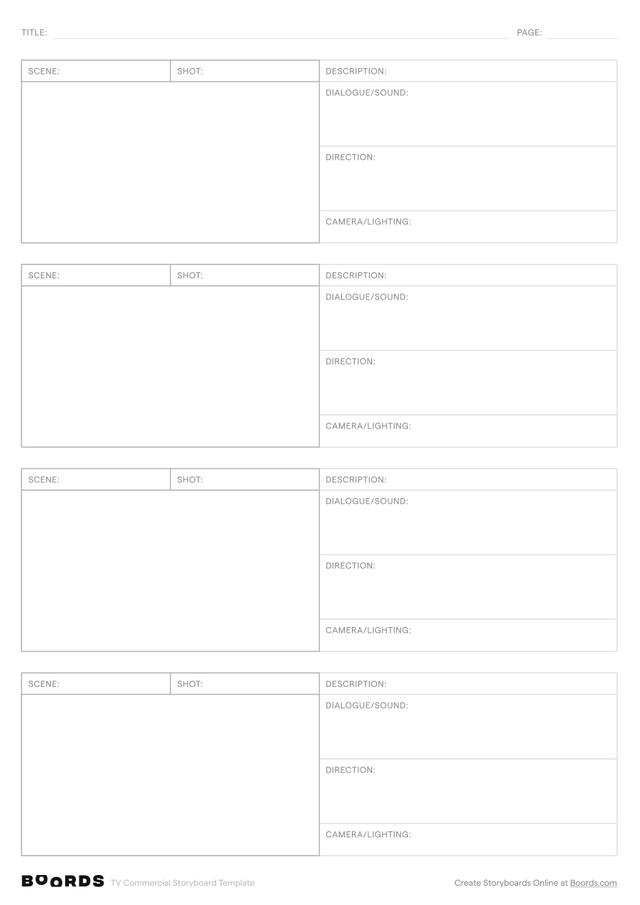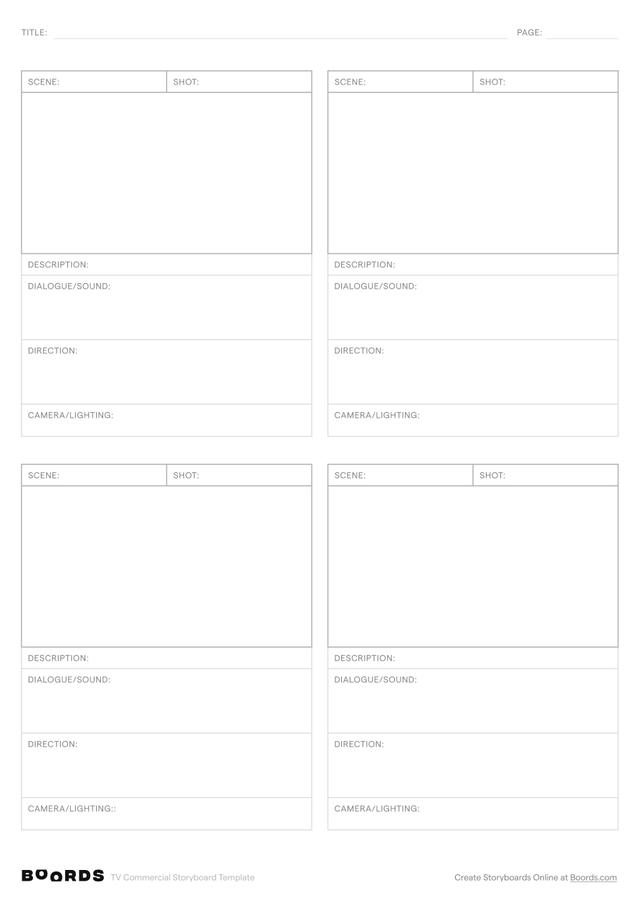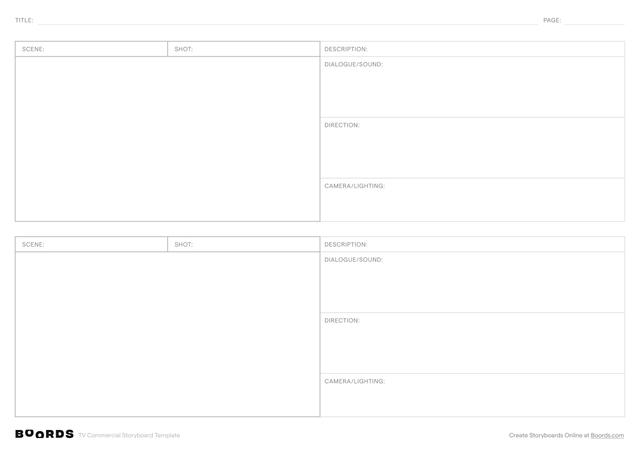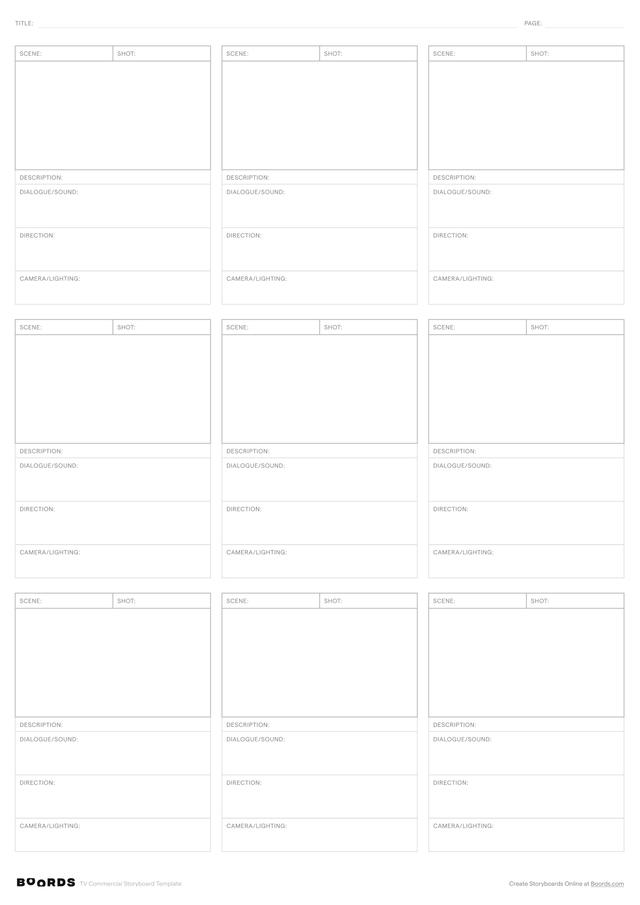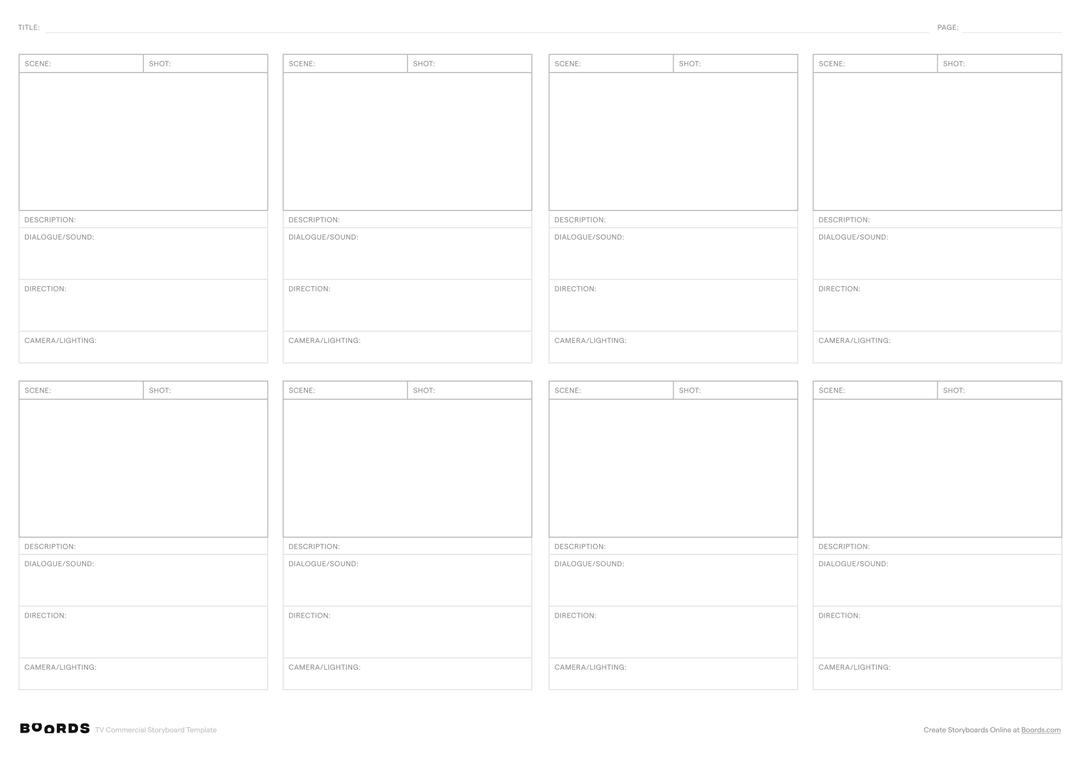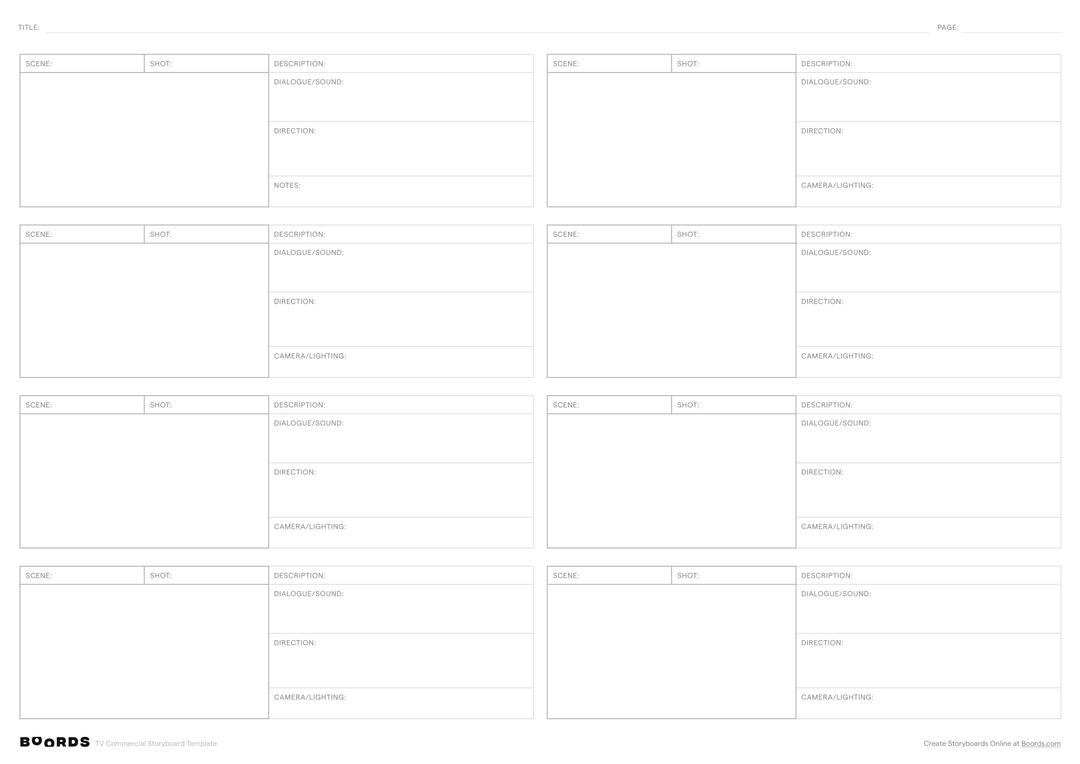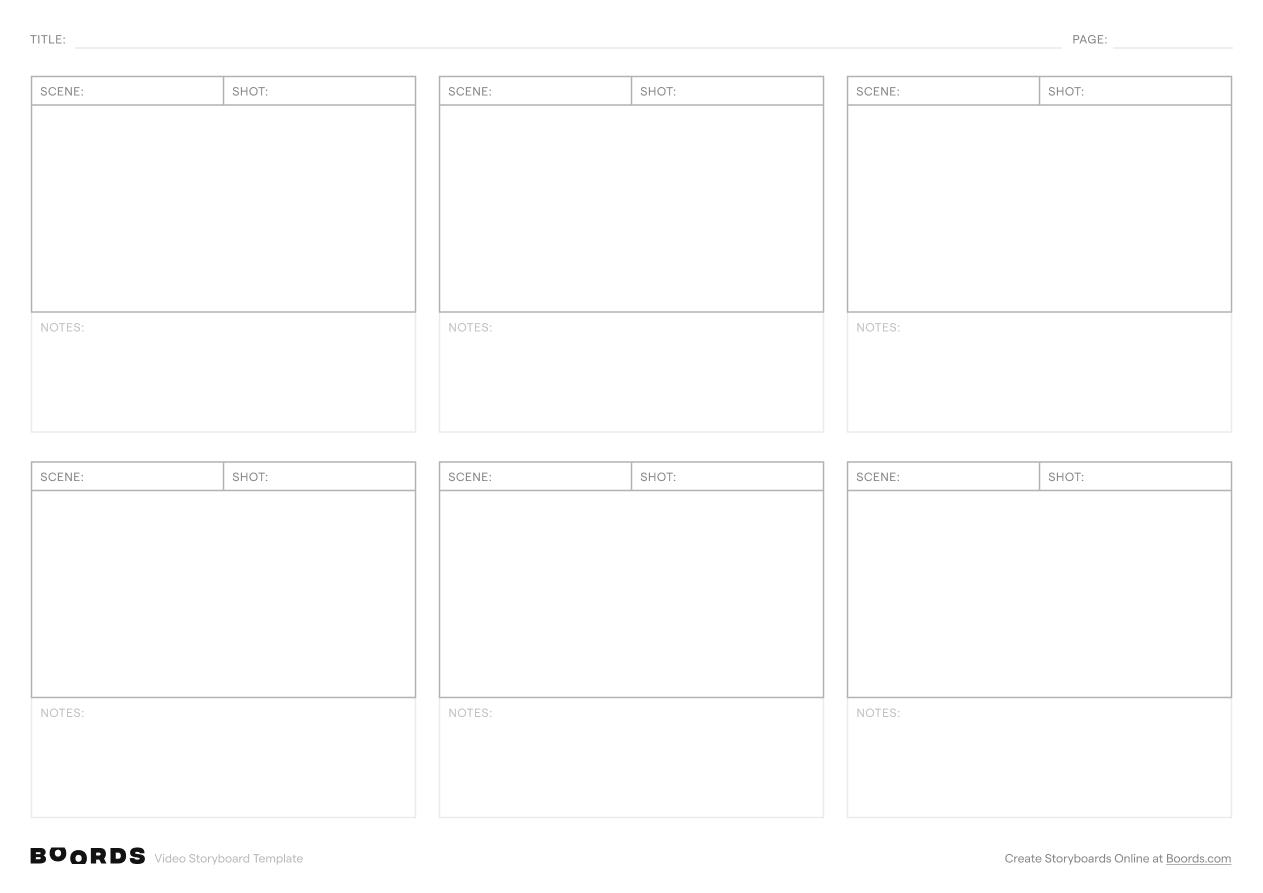Step 1: Fill in the Title and Page Number

In the "TITLE:" field at the top of the template, provide a clear and concise name for your TV commercial project. This title should reflect the main theme, product, or message of your advertisement. If your storyboard spans multiple pages, indicate the current page number in the "PAGE:" field to keep your documents organized.
Step 2: Label the Scenes

In the "SCENE:" column, enter a brief, descriptive label for each distinct scene or setting in your TV commercial. Scenes are separate segments of your advertisement that take place in different locations or focus on specific products, characters, or messages. Repeat the scene label for each row associated with that particular scene.
Step 3: Number the Shots

In the "SHOT:" column, assign a sequential number to each shot within a scene (1, 2, 3...). Shots are the individual camera angles, frames, or visual elements that make up a scene. Numbering the shots helps maintain a logical order and flow throughout your storyboard.
Step 4: Provide a Description

In the "DESCRIPTION:" field, write a concise summary of what is happening in each shot. Describe the key actions, events, or visual elements that are essential to conveying your commercial's message. This description should provide a clear picture of what the viewer will see on the screen.
Step 5: Include Dialogue and Sound

Under the "DIALOGUE/SOUND:" heading, transcribe any dialogue, voiceover, or important sound effects that occur during each shot. This includes both on-screen and off-screen audio elements. Aligning the dialogue and sound with the corresponding shots ensures that the audio and visuals are in sync.
Step 6: Specify Direction Notes

In the "DIRECTION:" section, provide any necessary directorial notes, instructions, or creative direction for each shot. This may include camera angles, movements, framing, transitions, or any other specific visual elements that are crucial to the storytelling and impact of your TV commercial.
Step 7: Add Camera and Lighting Notes

Use the "CAMERA/LIGHTING:" field to specify any particular camera techniques, lenses, lighting setups, or special effects required for each shot. This information is essential for the production team to achieve the desired visual style, mood, and overall look of your commercial.
Step 8: Review and Refine
Once you have completed the storyboard template for each scene and shot, review the entire document to ensure consistency, clarity, and effectiveness in conveying your commercial's message. Look for any gaps in the narrative or visual flow, and make necessary revisions. Share the storyboard with your team and stakeholders to gather feedback and collaborate on further refinements before moving into production.
